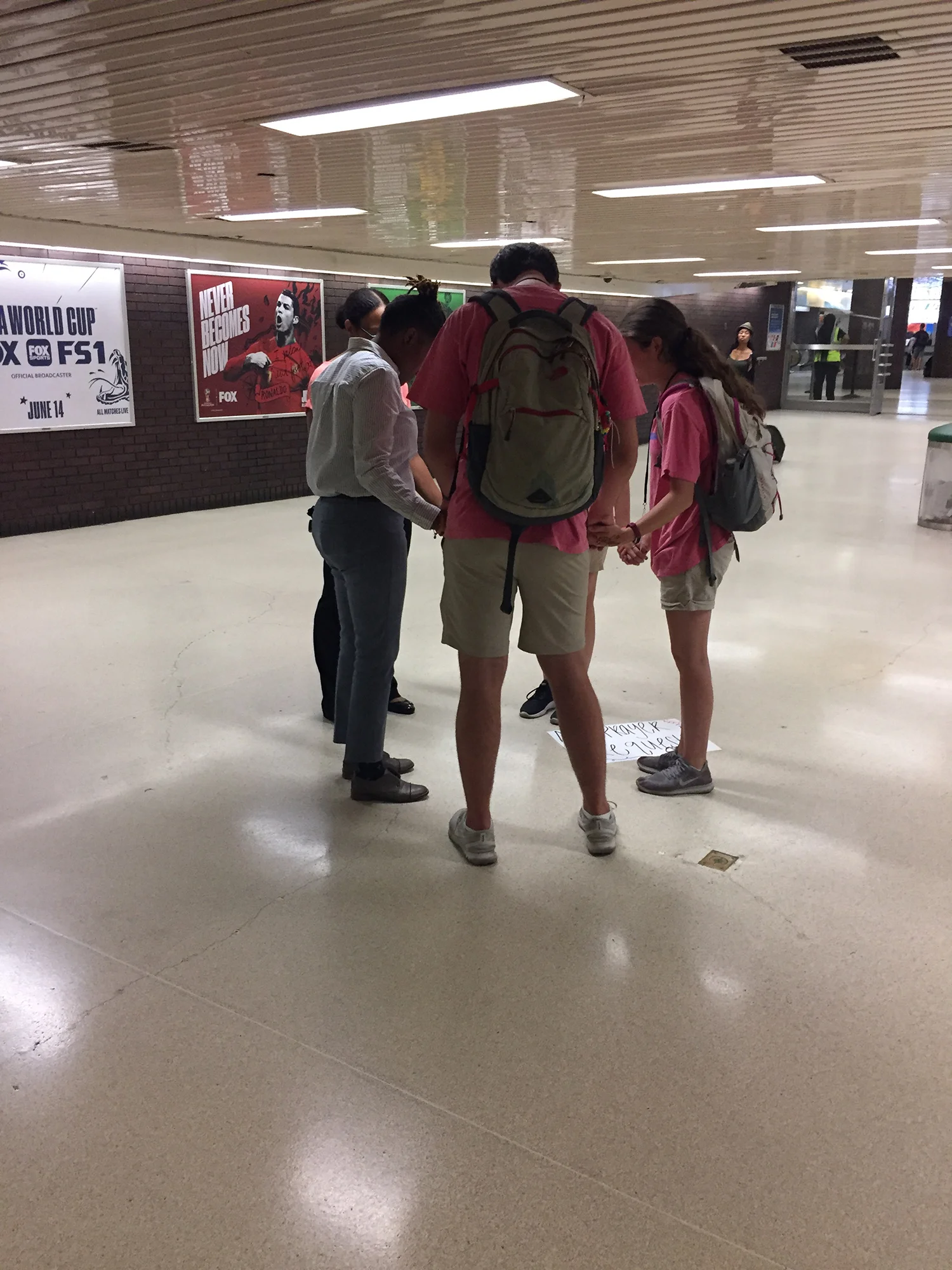Self-Care from a Gospel Motivation: 4 Ways to Avoid Burnout
A New Approach to Self-Care: Three Steps to Recharging
LMPG's Response to COVID-19
Listen Now: Raleigh Sadler on Vulnerability and Christian Ministry
Currey Blandford recently had our Executive Director on his podcast, A Theology of Hustle. Click the image below to hear Raleigh’s thoughts on vulnerability in Christian ministry, and to hear more about his upcoming new book, Vulnerable: Rethinking Human Trafficking, available for pre-order now.
4 Ways to Fight Human Trafficking...Right Now.
Do you have a passion to fight human trafficking? Here are 4 things you can incorporate into your daily life to recognize and respond to modern-day slavery:
1. Learn the signs of human trafficking. Awareness is the first step to opening our eyes to the trafficking and exploitation happening around us. Odds are, you have met someone that has been, is, or will be trafficked. We simply lack the knowledge to identify them.
2. Put the National Human Trafficking Hotline phone number into your cell phone. If you see something suspicious or a red flag of exploitation, file a report.
3. Get to know those most vulnerable in your community. Is there a homeless person that sleeps nearby the coffee shop you visit almost every day? Is there a child begging on a street corner that seems much too young to be left unattended? Are there advocacy organizations in your community that work with the hungry, at-risk youth, or immigrants? Get to know the people in your community. Strike up a conversation with them, offer to share a meal with them (seriously--sit down and eat with your homeless neighbor. Listen to their story intentionally!), and learn what their needs are, how they deal with vulnerability, and ways you can respond. This is a collaborative way we can work to end human trafficking for good.
4. Sign up for a Let My People Go Experience! Join us in New York City for a 3 or 5-day immersive missions trip for on-site training to identify, understand, and respond to human trafficking by loving vulnerable people. Contact us on our website if you have more questions, or comment on this article!
For more on Let My People Go, our mission and ways we can partner with your church to fight human trafficking by loving those most vulnerable, contact us on our website! We would love to connect with you.
5 Myths That Are Keeping You From Loving Those Who Are Trafficked
To recognize and respond to human trafficking, we need to debunk the stereotypes and myths that surround victims and survivors of human trafficking.
A group of students on the Let My People Go Experience pray for those being exploited in New York City.
Myth 1: I don’t know any human trafficking victims. They don’t live around me.
Fact: Odds are, you have met someone that was, currently is, or will be trafficked in the future. Human trafficking victims do not fit stereotypes. The only way for you to know if someone is being trafficked is by having a conversation with them. Get to know them, on a personal level. Human trafficking often hides behind our assumptions.
Read Anna’s story. She was trafficked while attending a church and no one thought to ask.
Myth 2: I see human trafficking victims portrayed in photos wearing chains or being tied up. Is that really how traffickers control their victims?
Fact: Traffickers use force, fraud, and coercion to manipulate trafficking victims and survivors. These means of exploitation include lying about job opportunities, debt slavery, threats of hunger or violence, or using immigration documents to threaten deportation. The “chains” of slavery are often psychological.
Click here to read Iryna’s story.
Myth 3: It’s easy to spot traffickers. We see how they act all the time on Law & Order!
Fact: Human traffickers do not fit stereotypes. According to the National Human Trafficking Hotline, more survivors of human trafficking are calling the tip line for help, which allows them to learn more about their exploiters. Traffickers are often friends with the victim, intimate partners, family members, or a potential employer promising a job opportunity. Learn more about the perpetrators of human trafficking.
Myth 4: It’s too unsafe for me to fight against human trafficking. What if I get targeted?
Fact: Traffickers prey on vulnerability to manipulate victims using force, fraud, and coercion. Many of us are blessed with communities and networks of support that make our vulnerability to exploitation much lower than others. Simply having a conversation with your homeless neighbor does not put you at risk for human trafficking. In fact, your homeless neighbor is much more at risk for trafficking every day, and could be exploited right now.
Myth 5: I can’t do anything to stop human trafficking.
At Let My People Go, we know fighting human trafficking is dangerous and not to be taken lightly. Using a gospel-motivated, congregational, and collaborative approach to ending human trafficking protects both the vulnerable people you’ll be coming into contact with, and yourself. Our goal is to protect, include, and empower those that could be, are, and may be trafficked.
Have questions about what a gospel-motivated, congregational, and collaborative justice ministry would look like at your church? Contact us! We would love to partner with you.






